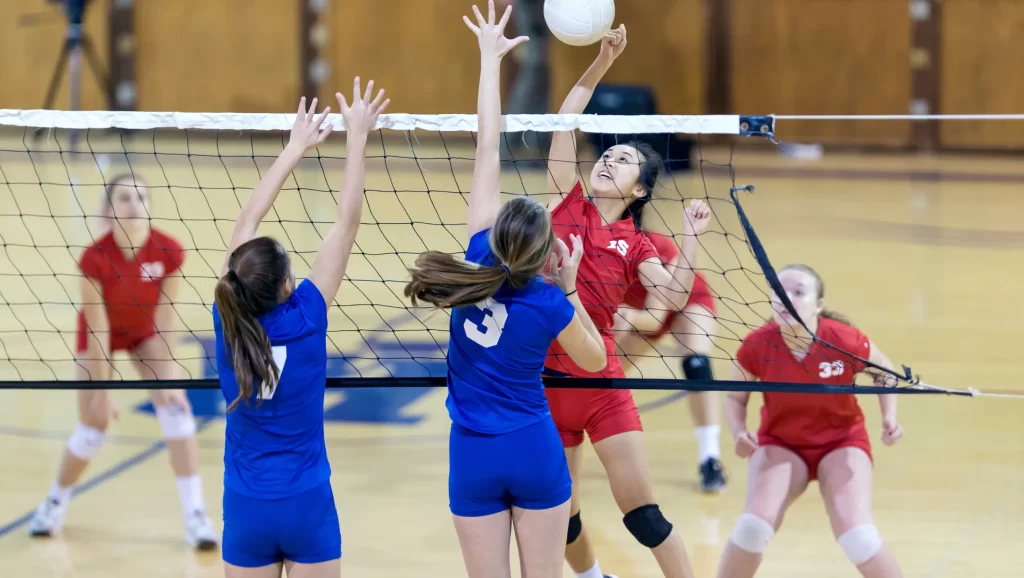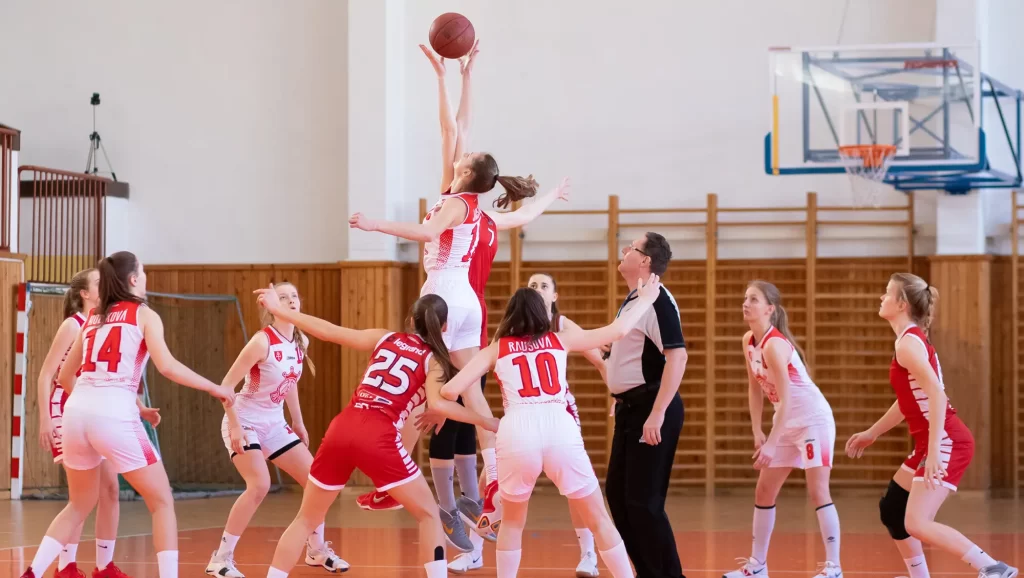Whether you are a star athlete, or play for fun, you could be one of more than 24,000 [CP1] international student athletes playing and studying in the United States every year.
And guess what? Many student athletes, including international students, playing for U.S. universities and colleges receive scholarships!
Scholarships provide financial support and open doors to a world of opportunities. In this guide, we’ll explain more about intercollegiate athletics in the U.S., how to find and apply for scholarships, and the importance of health insurance in taking care of yourself as an international student athlete.
Let’s go!

The National Collegiate Athletic Association (NCAA) is a U.S. non-profit organization that establishes rules regarding student athletics that universities and colleges must follow. [CPR1]
The NCAA oversees the well-being of more than 500,000 student-athletes who play for nearly 20,000 teams in the USA. The NCAA assigns all colleges and universities to one of three categories:
Universities and colleges are assigned to a Division based on school size and budget, helping to ensure that similarly-sized schools compete against each other. In other words, Division I schools only compete against other Division I schools; the same goes for Division II and III schools.
Division I Schools in the United States
There are currently 350 DI schools in the United States. While D1 schools are located all over the country, most can be found in California, Texas, New York, and Florida. Some examples of DI schools include:
Division II Schools in the United States
There are about 300 D2 schools in the United States. DII schools are small-to-medium-sized, and while they can’t offer as many or as large of scholarships as DI schools, tuition is usually less costly at DII schools as compared to DI schools. DII schools are located all over the United States. Some examples of DII schools include:

Aspiring international student athletes should review important eligibility information on the NCAA Eligibility Center website. The NCAA’s Eligibility Center helps determine whether students – domestic or international – are eligible to participate in intercollegiate athletics.
The NCAA also has a webpage [CP1] dedicated specifically to international student athletes. That page includes information on academic and amateurism requirements, records and other documentation needed, as well as country-specific information.
Junior Colleges: A Starting Point
You don’t need to be record-breaking athlete to land an athletic scholarship as an international student. However, if you have trouble finding a DI or DII school to pick you up, consider playing for a junior college team overseen by the National Junior College Athletic Association (NJCAA).
Junior colleges can offer scholarships to student athletes and can help athletes transfer to a larger university.

The NCAA requires student-athletes meet initial grade eligibility requirements and maintain good grades while participating in collegiate sports. Failure to meet minimum academic requirements can result in a student-athlete being deemed ineligible to participate in their sport.
Your coaches are guide you through the academic expectations, ensuring you remain eligible to compete.
Between training, competitions, on-campus jobs, classes, and exams, student athletes juggle a lot of responsibilities! But, as a student athlete, you must also prioritize caring for yourself, mentally and physically, to ensure you can perform you best. Take advantage of all your school’s benefits, such as tutoring and wellness services. You should also ensure you have a health insurance plan that provides the coverage you need. Sports-related injuries happen, and they may not be covered by a base health insurance plan. Need help finding a health insurance plan that provides the unique protection you need as a student athlete? Contact our experts at LewerGlobal!

Ready to start securing international student athletic scholarships? Here are three steps to get you started:
By following these steps, you can begin your search for international student athletic scholarships with confidence and a clear strategy. With dedication, talent, and persistence, your dream of pursuing higher education while excelling in your sport can become a reality. Good luck on your journey to becoming an international student athlete in the United States!
Remember that with dedication, talent, and persistence, your dream of pursuing higher education while excelling in your sport can become a reality. Good luck on your journey to becoming an international student athlete in the United States!